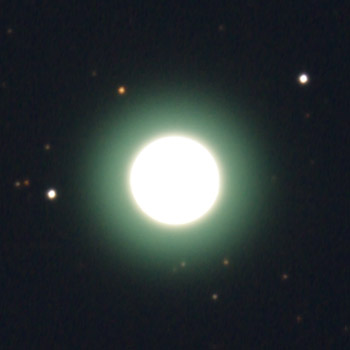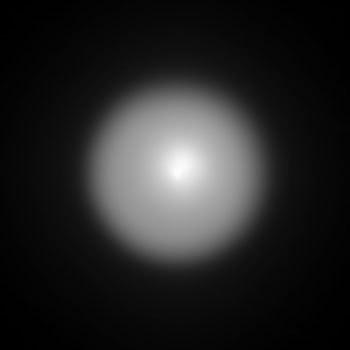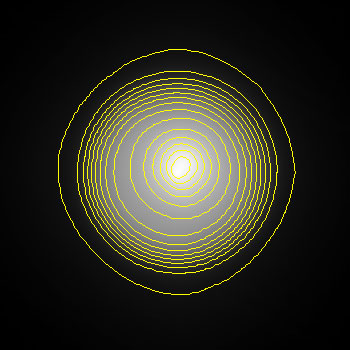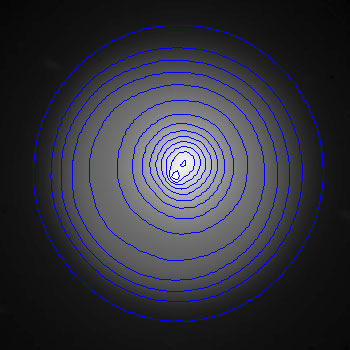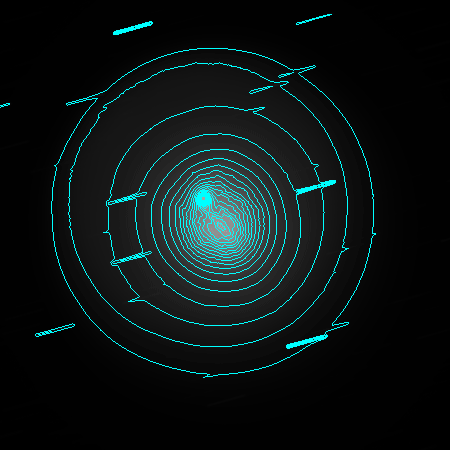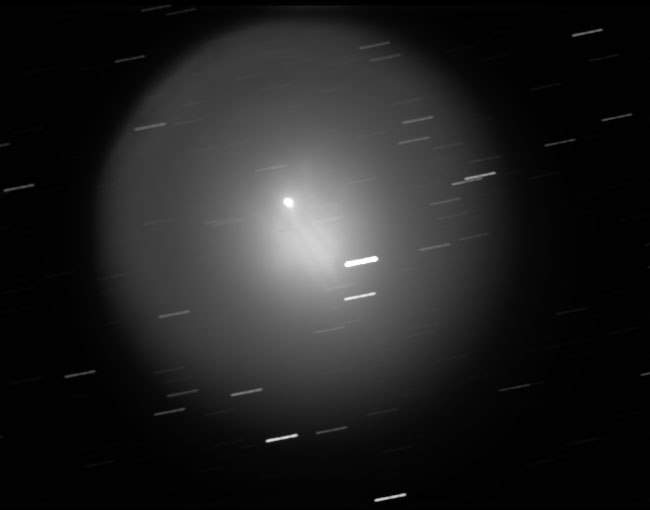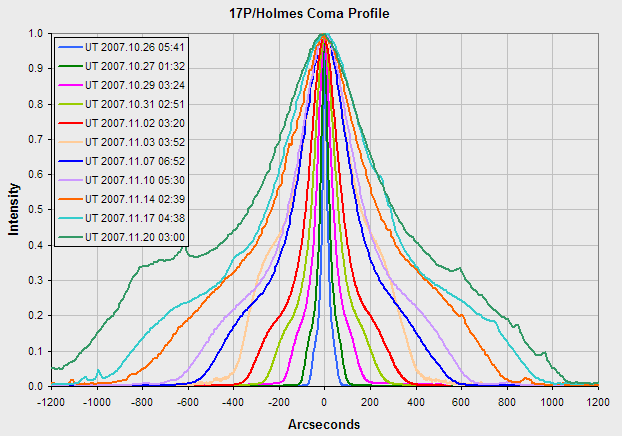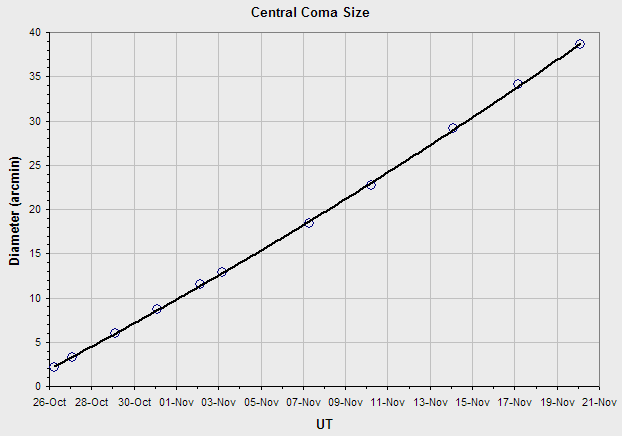|
by
Chris
L Peterson
Comet 17P/Holmes is a
Jupiter-family comet with a period of 6.9 years. It has a perihelion
of just over 2 AU, and its entire orbit lies between Mars and
Jupiter. It never comes closer to the Earth than 1.06 AU, and
therefore poses no impact risk, and does not produce any meteor
showers. It has an estimated nucleus diameter of 3.4 km.
You can use this finder chart to help locate it; Holmes is visible from the time it gets dark until morning.
UT 2007.10.25 04:30.
This 1-second exposure made with a Canon
300D on a 300mm LX200 fairly accurately represents the appearance of
the comet through the eyepiece. The yellow glow is probably
scattered sunlight. A slight asymmetry can be seen between the dense
nucleus zone (pseudo-nucleus) and outer coma, which may represent the
beginning of tail formation. UT 2007.10.25 04:30.
This 5-minute exposure made with the same equipment massively overexposes the comet's core, but allows much more of the coma to be seen. The green glow is probably from ionized gas, and can't be seen visually.
These images are both 5.1 arc-minutes square.
UT 2007.10.26 05:45.
This 8.9-minute exposure was stacked from 266 2-second frames, allowing for excellent dynamic range without saturation. The image was made with an ST8i camera on a 300mm LX200, and the scale is the same as in the earlier images, showing how much the coma has increased in size in just one day.
Mouse over the image to create a pseudo-color image that also reveals a hint of tail structure possibly forming.
UT 2007.10.27 01:45.
This 8.3-minute exposure was stacked
from 50 10-second frames. The scale is the same as the previous
images. The contour and mouse-over pseudo-color visualizations make it clear that the pseudo-nucleus is now significantly offset from the center of the gas/dust cloud surrounding it.
UT 2007.10.29 03:44.
This 41-minute exposure was stacked from
164 15-second frames. The frames were collected over a span of 2
hours, so the movement of the comet against the background stars is
apparent. The scale of these images has been reduced; the images are
9.4 arc-sec square. The contour and mouse-over pseudo-color visualizations show that the orientation between the pseudo-nucleus and coma center is changing.
UT 2007.10.31 03:16.
This 50-minute exposure was stacked from
200 15-second frames collected over 2.5 hours. The image is 12.1
arc-min square. The contour and mouse-over pseudo-color visualizations help show the structural detail now appearing in the central coma.
UT 2007.11.02 03:20.
This 54-minute exposure was stacked from 108 30-second frames collected over 1.5 hours. The image is 17.4 arc-min wide. Jets and internal structure are clearly visible near the pseudo-nucleus. The mouse-over pseudo-color visualization helps to show internal detail.
The coma extends outside the bounds of this image, as it is now larger than the sensor of my ST8i camera.
UT 2007.11.07 06:52.
This 30-minute exposure was stacked from 60 30-second frames. The image is 27.3 arcmin square- about the size of the Moon. As the comet continues to grow, it is becoming impossible to keep the image scale constant.
For reference, the inset shows the comet
as it appeared on October 24 (the first data at the top of this
page) at the same scale as the most recent image.
The profile of the comet head is shown above.
The coma diameter over about four weeks is plotted. The narrower central region is through the pseudo-nucleus, and the outer coma can be seen falling of in intensity somewhat slower.
The odd shape of the most recent profile is caused by the bright star Mirfak being inside the coma. This has been compensated for in calculating the coma width.
The profiles are normalized to the same height for clarity.
The changing size of the coma is plotted above.
The diameter of the dusty central coma is easily measured, and that is what has been used here. With extreme contrast stretching, the coma is seen to extend about twice as far. That outer coma is mostly gas rather than dust. The growth rate of the coma initially appeared linear, but now seems to be showing a very slight increase with time.
The initial dust ejection velocity was
about 500 meters per second from the nucleus (similar to what was
measured for comets Hyakutake and Hale-Bopp at their most active),
but the outer zone of the coma is now increasing in radius at over
700 m/s. This is difficult to explain, but may be related to
increased dispersion caused by the solar wind.
While the coma appears very large and
bright, it is also very tenuous. In the above images, dim stars are easily
seen right through it.
|


